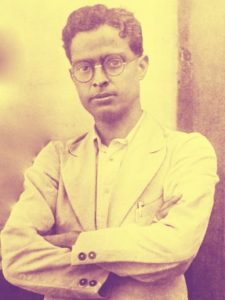Narayan’s Humour: An Integral Part of Narrative in The Guide
 R.K.Narayan’s conception of humour consists of close and realistic observation of life, precise juxtaposition of incongruities, deflation of illusions and, above all, sympathy rather than harsh satire. All these qualities are present in rich abundance in The Guide. “Humour writers”, says Narayan, ideally draw their inspiration from “absurdities and contradictions” of daily lives. However, their main subject should be the plight of the “unknown warrior”, the middle class common man, whose condition never improves despite all “improvements and benefits”.
R.K.Narayan’s conception of humour consists of close and realistic observation of life, precise juxtaposition of incongruities, deflation of illusions and, above all, sympathy rather than harsh satire. All these qualities are present in rich abundance in The Guide. “Humour writers”, says Narayan, ideally draw their inspiration from “absurdities and contradictions” of daily lives. However, their main subject should be the plight of the “unknown warrior”, the middle class common man, whose condition never improves despite all “improvements and benefits”.
These qualities help to explain Narayan’s use of a braided double narrative in which the omniscient third-person narratorial voice weaves in and out of Raju’s first person autobiographical narration. While the first set of qualities (observation, exposure and deflation) require objectivity and detachment, the final quality of sympathy demands the involvement of the reader in the joys and sorrows of the central character. This is achieved through the dual narrative in The Guide that continuously oscillates the reader’s focus closer to, and then away from Raju.
The third person narrative deflates Raju’s phony sagacity with gentle mockery. There is also a juxtaposition of incongruities in order to ridicule Raju’s pretensions—“He had created a giant with his puny self, a throne of authority with that slab of stone”. Raju comes through as a comic opera figure in the narrator’s account of the cornered Swami’s musings. The irony is that, at this point in Raju’s career, there is serious doubt as to whether Raju is in any sense a “good man” at all.
The first person narrative, in which Raju recounts his rise and fall, is also leavened by humour, and helps to draw the sympathy of the audience towards him. He has a quick sense of the absurd and can laugh at himself. For instance, in the scene where Raju’s conservative uncle visits his home to throw Rosie out, Raju narrates, “My uncle watched my antics from the kitchen.” A similar mock-serious self-portrayal is seen when Raju describes his attempt to interest the Albert Mission School authorities for a dance recital by Rosie. In fact, even as the reluctant holy man, he begins by being thoroughly amused at the folly of the villagers.
Narayan’s gentle humour is thus, integrally related to the theme and characterization of The Guide. It performs an important dramatic function in the novel. The empathy which he attempts to build for Raju through both the third-person and first-person narrative strands is all the more striking when one compares the presentation of Raju with that of Marco. Marco is a persona created by Raju’s mordant ridicule, even down to the name. He bears the brunt of the most caustic comedy to be found in the novel. In fact, we hardly get to see the real man.
What The Critics Say about The Guide
There is, however, another aspect to Narayan’s humour that endows his comic vision with complexity. Anita Desai describes it as “dubious sceptical tone”. It is this element that made Graham Greene compare Narayan with Chekhov. William Walsh characterizes this strain in Narayan’s art as “serious comedy”. The defining element of this is irony.
Irony: A Potent Narrative Device in The Guide
Narayan’s humour is intimately connected with a sense of irony. For instance, Raju draws a telling parallel between enforced sainthood and imprisonment. Another source of irony is Narayan’s dry, dispassionate narrative in the authorial sections describing Raju’s pretensions. The irony is heightened by a deliberate omission of moral judgement or authorial comment: “He composed his features and pose to receive them (the villagers)”.
On many occasions, this gentle irony broadens out into overt satire. The description of the pandemonium surrounding the site of Raju’s penance sharply mocks the tendency of the Indians (or people in general, perhaps) to turn every situation to a quasi-religious carnival. The irony in The Guide is multi-layered. Raju is metaphorically incarcerated by the spiritual demands of the village folk for a holy man in their midst. The final sentence, in which Raju feels the jaws of the trap closing in on him, is all the more ironic because Raju, who had played multiple roles of his choice all his life, has to play a part chosen by others.
The final lines of the novel, as Raju steps into the water for the last time, there is both ambiguity and hope, achieved by subtle use of irony: “The morning sun was out now; a great shaft of light illuminated the surroundings…they held him as if he were a baby.” The reference of an illuminating beam in this context becomes a bearer of redemption. The denoument is ironically open-ended. It invites the reader to ponder on the moral ramifications of choice and agency.
Whether rains come or not, Raju succeeds in transcending his own ambivalent nature through self-sacrifice.
It is a rare privilege of Narayan to use the comic mode to prove the highest kind of reality in The Guide. It is his irony that performs the more serious artistic functions of articulating and assessing the moral universe which his characters inhabit, with co-existence of appearance and reality, tradition and modernity, spirituality and materialism. The presence of these contradictions are fully realized by Narayan’s comic vision and especially through the portrayal of his central character Raju.

Forever Indebted to my beloved Teacher Dr. Krishna Sen. You can get a complete set of remarkable critical essays by Dr. Sen in her book. Just click on the link below:




